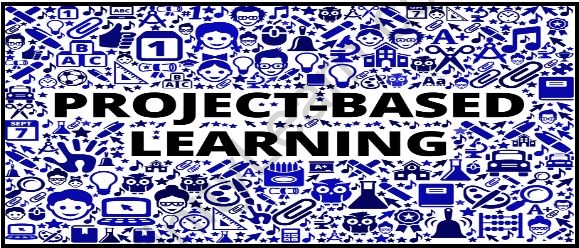Table of Contents
The school’s teachers used a project-based learning (PBL) method to instruction, which focuses on addressing real-world challenges and solving actual, multidisciplinary problems. Students rely on their institutions to prepare them for occupations that will allow them to flourish immediately after graduation as well as 10, 20, and 30 years later. They must be prepared for jobs that do not yet exist and industries that are unimaginable. This may appear to be a difficult challenge for schools. Professional development is critical for project-based learning, and the school meets this need by training teachers to design and deliver high-quality Project Based Learning that engages students and leads to deeper understanding.
Students work on a project that engages them in fixing real problems or answering a challenging question over a long period of time – from a week to a semester. They demonstrate their knowledge and abilities by producing a public product or giving a presentation in front of a live audience. As a result, students gain a strong understanding of the subject matter as well as critical thinking, cooperation, creativity, and communication abilities. Project-based learning instills a contagious sense of creativity in both students and teachers.
Benefits of project-based learning
- The student is given a large and open-ended issue, challenge, or problem to research, react to and solve.
- Brings into the picture what pupils should know, comprehend, and be able to do intellectually.
- Is inquiry-based, encourages kids’ natural curiosity, and produces questions as they seek solutions.
- Critical thinking, communication, cooperation, and creativity are among the 21st-century talents used.
- Allows students to have a say in the process.
- Allows for input and adjustment of the plan and project, much as it would in real life.
- Students are required to present their problems, research process, methods, and results in the same way that scientific research or real-world projects are subjected to peer review and constructive criticism.
Key Elements Of Project-based learning
- A complicated task or question.
- Continual investigation.
- Authenticity.
- Choice and input from students.
- Reflection.
- Revision and critique.
- Product for the general public.
Project-based learning has quite a big impact.
One of the most effective strategies to keep schools from regressing is to firmly establish modifications in classroom instruction that can withstand changes in leadership or technological issues, such as Project-Based Learning (PBL). A true “future school” should teach students problem-solving skills, as well as how to communicate, collaborate, and think critically about issues that affect the world today and in the future. These abilities will enable students to adapt and evolve in order to tackle the challenges that the occupations of the future will bring. These requirements are met by Project-Based Learning (PBL).
Students in a PBL model work on a project for a week or longer that requires them to solve a real-world problem or answer a hard question. They demonstrate their knowledge and skills by creating a public product or giving a live presentation, rather than taking a single test or writing an essay on what they’ve studied. Students gain deep material knowledge as well as critical thinking, creativity, and communication skills while participating with their community through this process.
The Brain Science That Underpins PBL.
The scientific foundation of PBL is one of the reasons for its effectiveness.
Project-based learning and learning efficacy have a significant relationship, according to the Foundation. PBL, for example, aids student retention by providing context, teaching students how to apply lessons, and understanding their own thought processes through projects. PBL not only aligns with cognitive functioning, but it also improves it and opens up new learning channels. Collaboration, leadership, and empathy are also enhanced. For all of these reasons, PBL is the ideal model for equipping students with the skills that future jobs will require, such as higher-order thinking.
A Little But Significant Move.
For school districts seeking ways to better prepare kids for the future, Project-Based Learning is an effective and targeted strategy. Not only can it be integrated into existing public schools with only a few structural and regulatory changes, but it can also be integrated into a fully-redesigned charter or “special” schools.
1) Investment must be made to develop professional development. Districts can collaborate with outside groups that specialize in PBL. Teachers that have been educated in PBL implementation tend to embrace it, based on our experience working with districts.
2) At least twice a year, engage students in high-quality PBL projects. PBL doesn’t have to be a full-fledged program. If each student participates in two projects per year, they will have learned the abilities required for future careers by the time they graduate.
Also read: Should pupils be able to take an art or music class in place of a PE class?
FAQs:
What do you mean by the project-based learning (PBL) method?
The school's teachers used a project-based learning (PBL) method to instruction, which focuses on addressing real-world challenges and solving actual, multidisciplinary problems.
What brain science underpins the project-based learning (PBL) method?
PBL not only aligns with cognitive functioning, but it also improves it and opens up new learning channels. Collaboration, leadership, and empathy are also enhanced.
Q3. What are the three benefits of the project-based learning (PBL) method?
Ans:
a) Students are required to present their problems, research process, methods, and results in the same way that scientific research or real-world projects are subjected to peer review and constructive criticism.
b) The student is given a large and open-ended issue, challenge, or problem to research, react to and solve.
c) Brings into the picture what pupils should know, comprehend, and be able to do intellectually.









